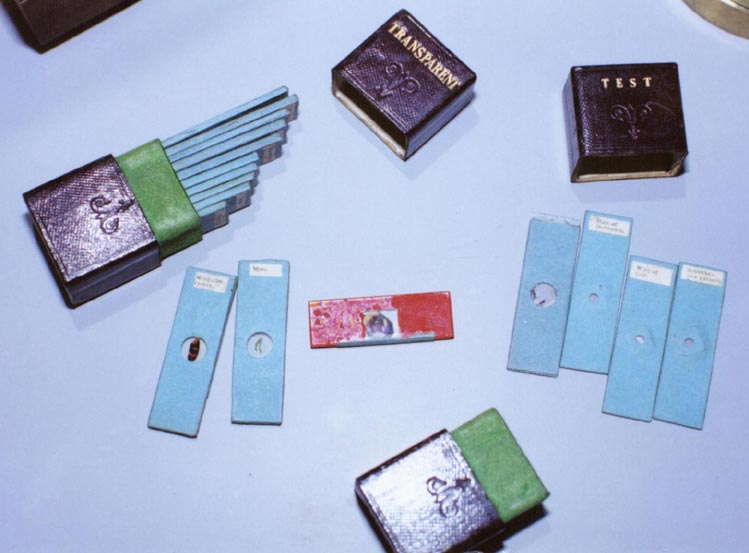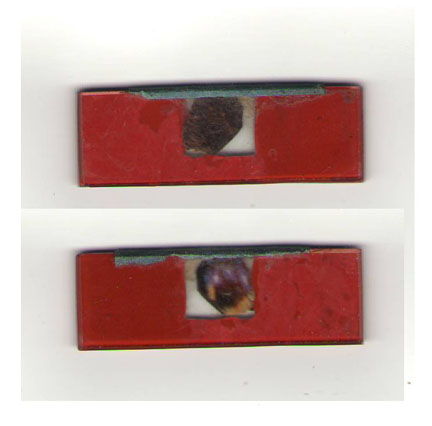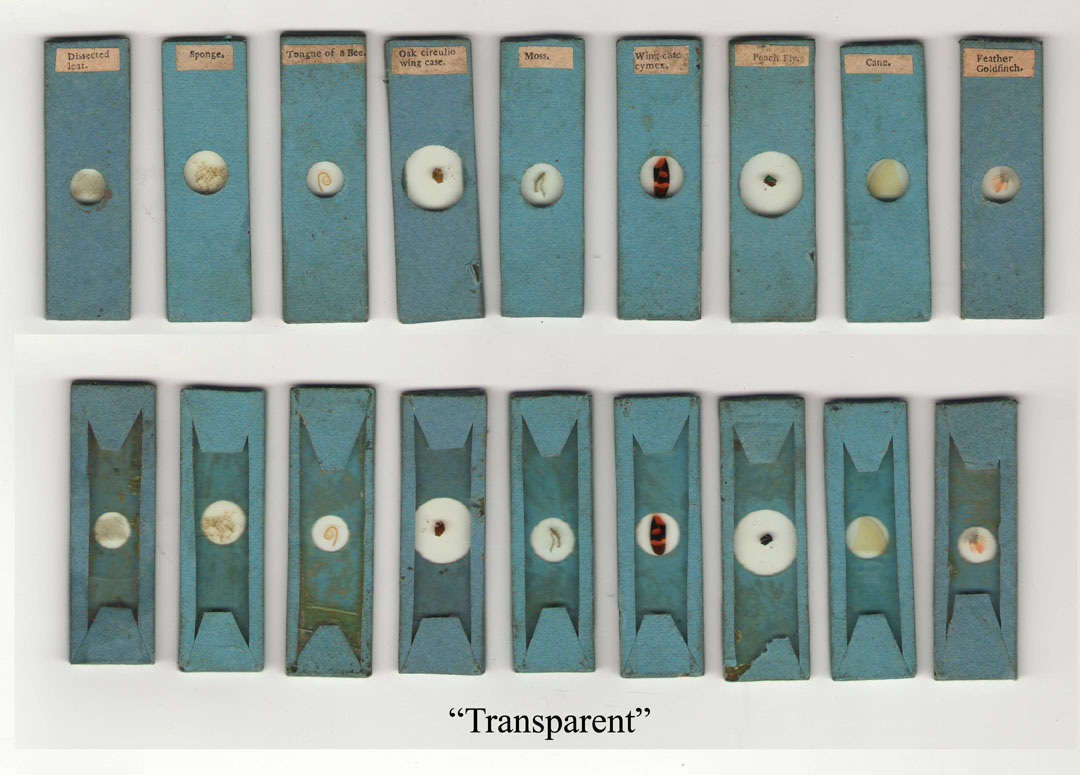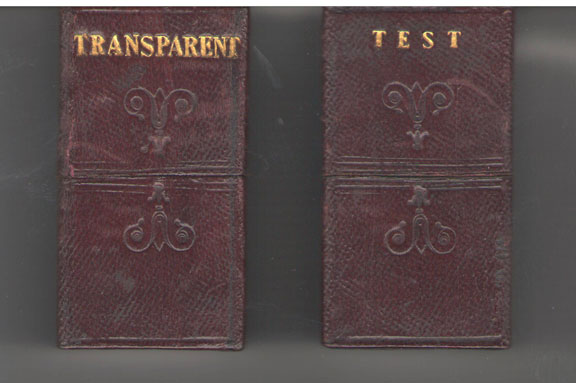MICROSCOPE-ANTIQUES.COM © 2013-15.
SLIDES SUPPLIED WITH A CARY TRANSITIONAL ACHROMATIC MICROSCOPE:

This is a page devoted to the slides supplied with a Cary Transitional Achromatic Microscope.
Although the cases and slides are similar to those supplied by Andrew Pritchard, there
is good reason to think they were also supplied by Cary.
DESCRIPTION

 There are seven slides that were contained in the box labelled 'Test' but since only four
are thin
and with thin glass coverslips, the other slides may have simply been stored in the
'Test' box
as there was no more room in the other box for them. A single slide in the 'Test' box is
different than the others, being two glass slides with the subject between but the slides are
sealed together with red wax. This wax-sealed slide contains a large piece of a wing of a butterfly.
There are seven slides that were contained in the box labelled 'Test' but since only four
are thin
and with thin glass coverslips, the other slides may have simply been stored in the
'Test' box
as there was no more room in the other box for them. A single slide in the 'Test' box is
different than the others, being two glass slides with the subject between but the slides are
sealed together with red wax. This wax-sealed slide contains a large piece of a wing of a butterfly.
 Among the 'transparent' objects are:
Among the 'transparent' objects are:
- Dissected leaf.
- Sponge.
- Tongue of a bee.
- Oak circulio wing case.
- Moss.
- Wing case cymex.
- Peach Fly.
- Cane.
- Feather Goldfinch.
At least one of the slides in the 'test' box was not a test object and is made just as the
slides in the 'transparent' box; it is labelled simply as
'Leaf of a Flower.'
 The slides are contained in two dark-maroon colored tooled leather cases, typical of those
also sold by, and signed by
Pritchard, though these two cases are unsigned. One of these slides is different than
the others in that it consists of
two slides cemented together by red wax, but it has lost almost all of its blue paper
cover. The test objects have small
square cover slips which can be seen as raised diamond-shapes under the blue papers.
The slides are contained in two dark-maroon colored tooled leather cases, typical of those
also sold by, and signed by
Pritchard, though these two cases are unsigned. One of these slides is different than
the others in that it consists of
two slides cemented together by red wax, but it has lost almost all of its blue paper
cover. The test objects have small
square cover slips which can be seen as raised diamond-shapes under the blue papers.
HISTORY OF THE CARY SLIDES
These slides, specifically under the
categories
of 'Transparent' and 'Test' slides are mentioned in the
books of Charles Gould, the inventor
of the Cary-Gould microscope and the man who supervised much of the microscope
production for the Cary company.
Although the case labelled 'Transparent' does indeed contain nine specimens suitable
for viewing
with transmitted light, only two or three of those contained in the 'Test' case appear to be
slides
intended for testing. It is interesting to note that although both types of slides are covered
with blue wrapers, and both are labelled with printed labels that were likely cut from a list,
the 'transparent objects are mounted between two thick slides, whereas the 'test objects
are mounted on thinner slides with a glass cover slip over them and the paper over all.
As noted in Gould's book, only the two slides labeled 'Scales of Brassica, curious'
and 'Hairs of Dermestes' are among those mentioned as test objects in his books.


 There are seven slides that were contained in the box labelled 'Test' but since only four
are thin
and with thin glass coverslips, the other slides may have simply been stored in the
'Test' box
as there was no more room in the other box for them. A single slide in the 'Test' box is
different than the others, being two glass slides with the subject between but the slides are
sealed together with red wax. This wax-sealed slide contains a large piece of a wing of a butterfly.
There are seven slides that were contained in the box labelled 'Test' but since only four
are thin
and with thin glass coverslips, the other slides may have simply been stored in the
'Test' box
as there was no more room in the other box for them. A single slide in the 'Test' box is
different than the others, being two glass slides with the subject between but the slides are
sealed together with red wax. This wax-sealed slide contains a large piece of a wing of a butterfly.
 Among the 'transparent' objects are:
Among the 'transparent' objects are: The slides are contained in two dark-maroon colored tooled leather cases, typical of those
also sold by, and signed by
Pritchard, though these two cases are unsigned. One of these slides is different than
the others in that it consists of
two slides cemented together by red wax, but it has lost almost all of its blue paper
cover. The test objects have small
square cover slips which can be seen as raised diamond-shapes under the blue papers.
The slides are contained in two dark-maroon colored tooled leather cases, typical of those
also sold by, and signed by
Pritchard, though these two cases are unsigned. One of these slides is different than
the others in that it consists of
two slides cemented together by red wax, but it has lost almost all of its blue paper
cover. The test objects have small
square cover slips which can be seen as raised diamond-shapes under the blue papers.